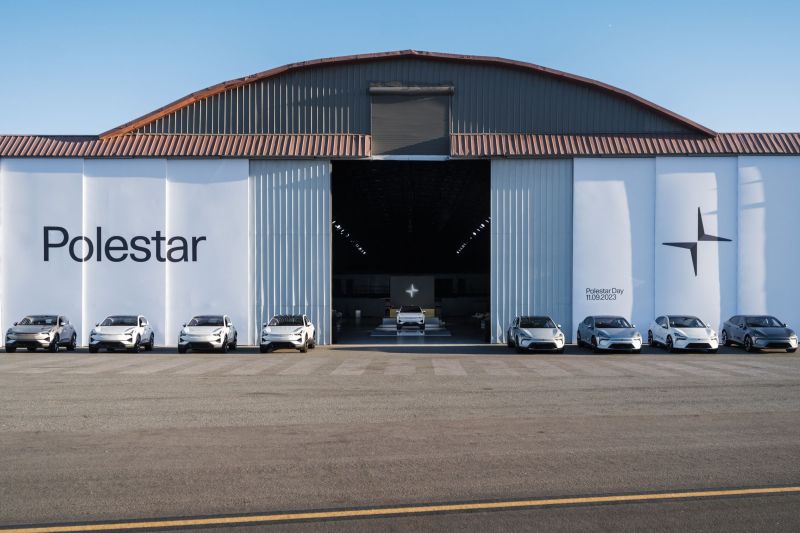
Polestar, the Swedish automaker owned by Volvo, has only one fully electric vehicle currently available in the U.S. market — the Polestar 2, a competitor of the Tesla Model 3. However, for Polestar to catch up with its biggest rivals, it needs to expand its lineup with more EV models — and it has plans to do so.
It first unveiled the Polestar 3 in 2022; delivery was expected to start in 2023, but it may take longer than that. The Swedish automaker also unveiled the 2025 Polestar 4 in April this year. Meanwhile, we only saw the concept version of the Polestar 5 until recently during the Polestar Day event when the production model was unveiled. The Polestar 6 also made a brief appearance, and we caught a glimpse of what it might look like. What can you expect in the upcoming Polestar models?

The Polestar 3 will have V2G capability
The Polestar 3 SUV will be equipped with vehicle-to-grid (V2G) capability. This means that if you own a Polestar 3, you could use it to back up your home and send power back to the grid in case of a power outage. Better yet, V2G technology makes it possible to charge your EV during off-peak hours and sell power back to the utility company during high-demand hours to reduce your electricity bills. The same technology will also be available on the Volvo EX90, which is built on the same platform as the Polestar 3.
Polestar also disclosed that it’s working on a virtual power plant that will connect all Polestar 3 EVs connected to the grid to share energy and monetize while supporting sustainable energy. Beyond that, the Polestar 3 will have a more extended range and a more powerful motor than the Polestar 2. More succinctly, the Polestar 3 is expected to have a range of up to 379 miles and a maximum power output of 517 hp.

The Polestar 4 will have a faster acceleration
The Polestar 4 crossover coupe will be built with dual electric motors to produce up to 544 horsepower. This will be sufficient for it to accelerate from 0 to 62 mph in about 3.8 seconds, making it faster than Polestar 3 and Polestar 2. What’s even more interesting is that Polestar says that the Polestar 4 will have “the lowest carbon footprint” than any other Polestar vehicle ever made.
If we go back to when the Polestar 4 was first unveiled, we noticed it was missing a rear window, and instead, it opted for a rear-mounted camera. Well, we had our concerns about what would happen if the camera failed or if the image was distorted or obstructed. During the Polestar Day event, the automaker announced it intends to fix those potential problems using LiDAR (Light Detection and Ranging) sensors to construct a 3D map of the vehicle’s surroundings. This means that even if the rear-mounted camera fails, you can still rely on the LiDAR sensors to detect any nearby object.

The Polestar 5 will compete against the Porsche Taycan
The Polestar 5 fastback sedan is expected to produce up to 884 horsepower. If it delivers, it will be more powerful and probably faster than the Porsche Taycan. It will also include a 103-kWh battery with an estimated range of 300 miles, which is better than what you would get on a Porsche Taycan. However, the Polestar 5 is not coming anytime soon, and you may have to wait until 2025.
But if you want a convertible Polestar sports car, you may need to wait until 2026, when the Polestar 6 is expected to be shipped out of the production line. It will be built using the same architecture and powertrain as the Polestar 5 to deliver 884 horsepower. We don’t know how fast it will accelerate, but it could be a contender for one of the fastest electric cars in the world.



